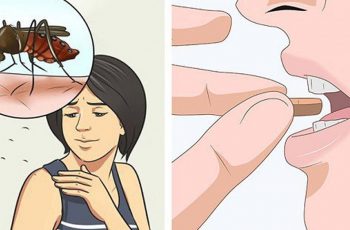When it comes to ear hygiene, you could be doing more harm than good with your current cleaning regimen. The ears are an extremely sensitive and delicate area, and as such, you should take precautions and do your research before attempting to clean them yourself. If great care is not taken when cleaning your ears, it could result in impaired hearing, infection, and/or painful long-term damage. What makes this troubling is that so many people are still applying old concepts to their ear-cleaning practices. The Telegraph reports that every year, about 7,000 people in England alone end up in the hospital with injuries sustained by cotton swabs — more than are injured by razor blades.
Cotton swabs are not safe to clean your ears with.
Many people are unaware that doctors and healthcare professionals have been trying to stop people from cleaning their ears with cotton swabs for years.
The reality is that you should not stick anything in your ear canals.
There is a very real danger of damaging your ear drum. More commonly, people will simply push excess wax deeper into the ear canal, leading to blockages and impaired hearing.
Earwax isn’t inherently dirty.
It is important to recognize that earwax, or cerumen, is produced naturally by glands in your ears and it is healthy to have a normal amount of wax present in the ear. With its antibacterial properties, the wax serves as part of your body’s defense system, cleaning and lubricating the canals of your ears.
Before you know how to clean your ears, it’s important to know when to clean your ears.
For the most part, ears clean themselves by cycling wax and dirt out towards the ear openings. Some people may never need to clean their ears — genetics will largely determine this. In some people, wax will build up, though. It can become unsightly and uncomfortable and then it becomes important to clean your ears, but safety must be considered. So if you can’t use a cotton swab, then what?
(If you’re concerned with the volume of wax or you ever feel pain or an ache in your ear, you should seek a doctor immediately).
Wax is only produced in the outer part of your ear canal, away from the eardrum.
So when blockages from wax do occur, it’s generally because the person has been using a cotton swab to “clean” their ear. The deeper you dig, the more likely you are to sustain damage or create a blockage. Cotton swabs aren’t all bad though, you can use them to safely clean around your ear area, just don’t insert them into your ear canal.
To clean the inner recesses of the ear, there are a number of home remedies that are safe and easy to try.
A salt water solution is a simple and effective method to flush buildup from the ear. Simply dab a few drops in, swish, and flush. Use water that’s been warmed to body temperature before trying this.
Oils
A few drops of baby oil, mineral oil, or specifically formulated ear-cleansing oil are also safe and effective to use for cleaning inside your ear passages. Be sure to check the ingredients to make sure you’re not allergic to any of them. Test a dab on your wrist and allow to sit for an hour before trying them in your ears if you’re unsure.
Detergents
Using hydrogen peroxide or carbamide peroxide may also be effective at cleaning wax out of the ear canals. If these rinse methods aren’t enough for you and you are still suffering wax buildup, there are additional measures that can be taken.
Irrigation or syringing.
You can have a doctor perform an irrigation of your ear passages or even get a home irrigation kit and perform it carefully yourself. A saline solution is the most common and effective rinse for this method.
See a doctor.
If the home remedies suggested have not been working for you and you are still suffering from wax buildup or discomfort, you should see an otolaryngologist (ear, nose, and throat doctor). They can prescribe drops or perform wax extraction using the proper tools.
Are ear candles safe?
NO! The FDA has launched an assault against ear candling because the process is dangerous and there is no evidence that it is even effective. Common injuries include burns, ear obstructions (due to wax from the candle entering the ear), and ear perforations. Simply do not try this stupid gimmick.
source [1]
If you know someone who might like this, please click “Share!”












